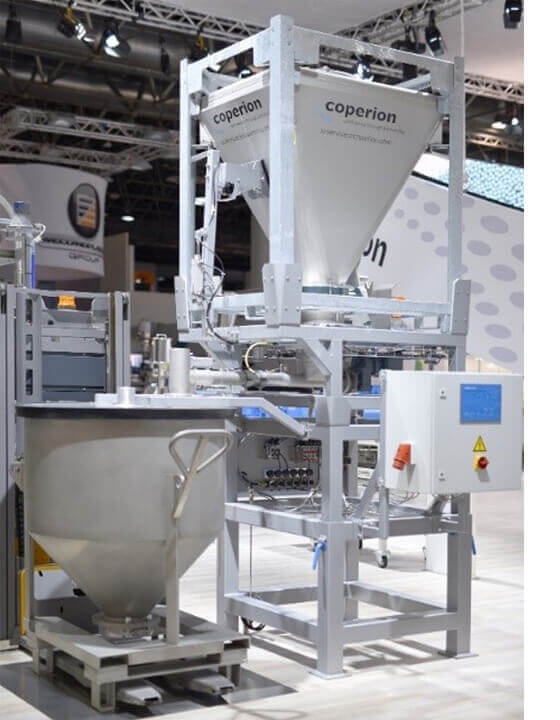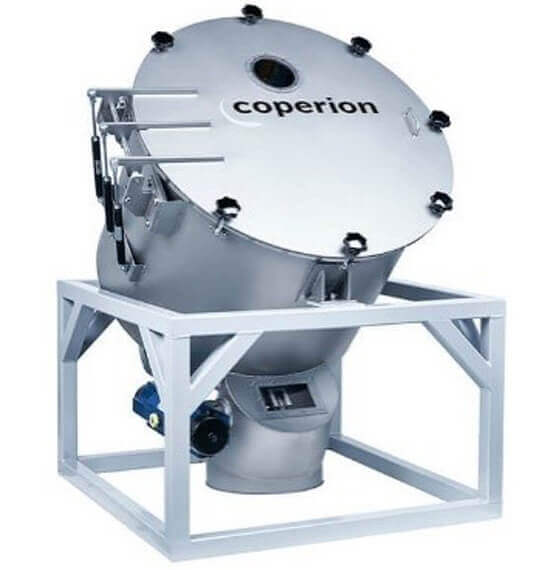Coperion combines every step, from ingredient delivery to supplying premixes via the extruder, within the concept of Multi-Ingredient Handling (MIH). Along with automated and manual feeding, mixing and in-house transport are also included.
As the name states, MIH systems handle a variety of components. With the growing number and increasing variety of products used, the scope of the feeding stations in conventional feeding systems increases significantly, since each component requires its own feeder. To counteract this increase, the MIH concept relies upon interchangeable bulk containers (IBCs) that are only used when the product they contain is required for the current recipe. Unneeded receptacles can remain stored outside of the feeding area, reducing the space required in the active feeding area as well as the number of feeders needed for the required components.
The transport containers can be used to some extent directly at the various feeding locations (IBC, big bag) or they are emptied in equipment designed for that purpose into standardized containers (sacks, octabins). Storage container exchange, as well as transport of premix IBCs, represent critical points for the level of overall system automation. One approach to automated transport is classical conveying technology using floor-level conveying means, such as roller or chain conveyors, that are primarily suited for high transport throughput. In contrast, driverless transport systems (DTS) made up of various transport vehicles, depending upon the scenario and task at hand, are a convincing solution.



